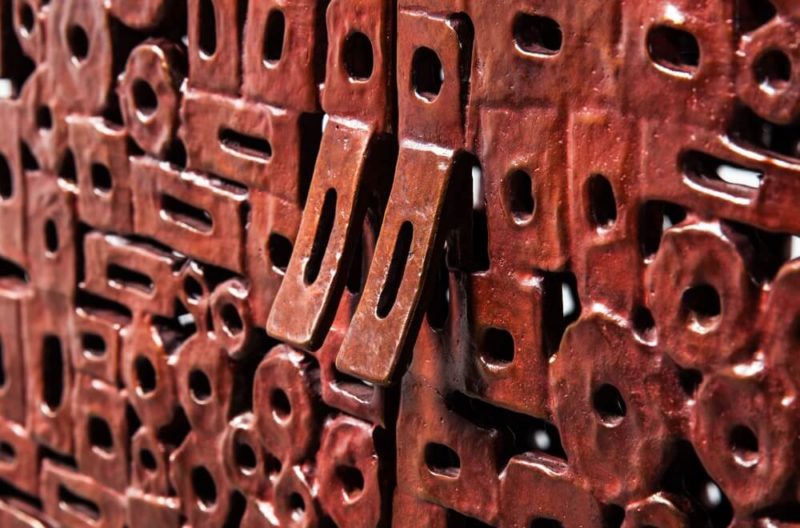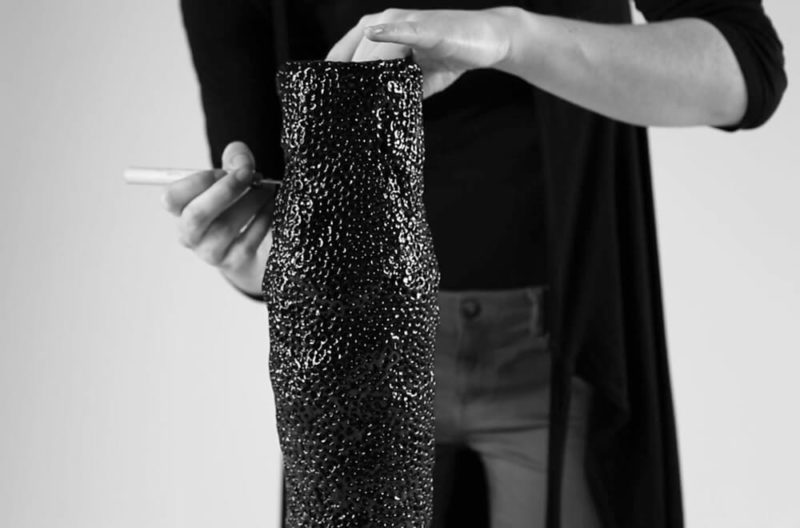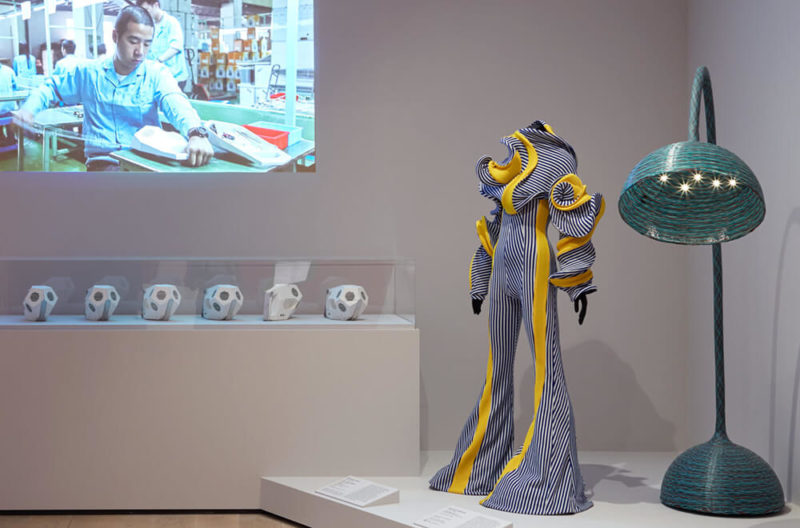Charlotte Perriand: Inventing a New World
An ambitious exhibition celebrating the pioneering designer, egalitarian, environmentalist and feminist, who was instrumental in shaping the way we live today.
Fondation Louis Vuitton, Paris
2nd October 2019 – 24th February 2020
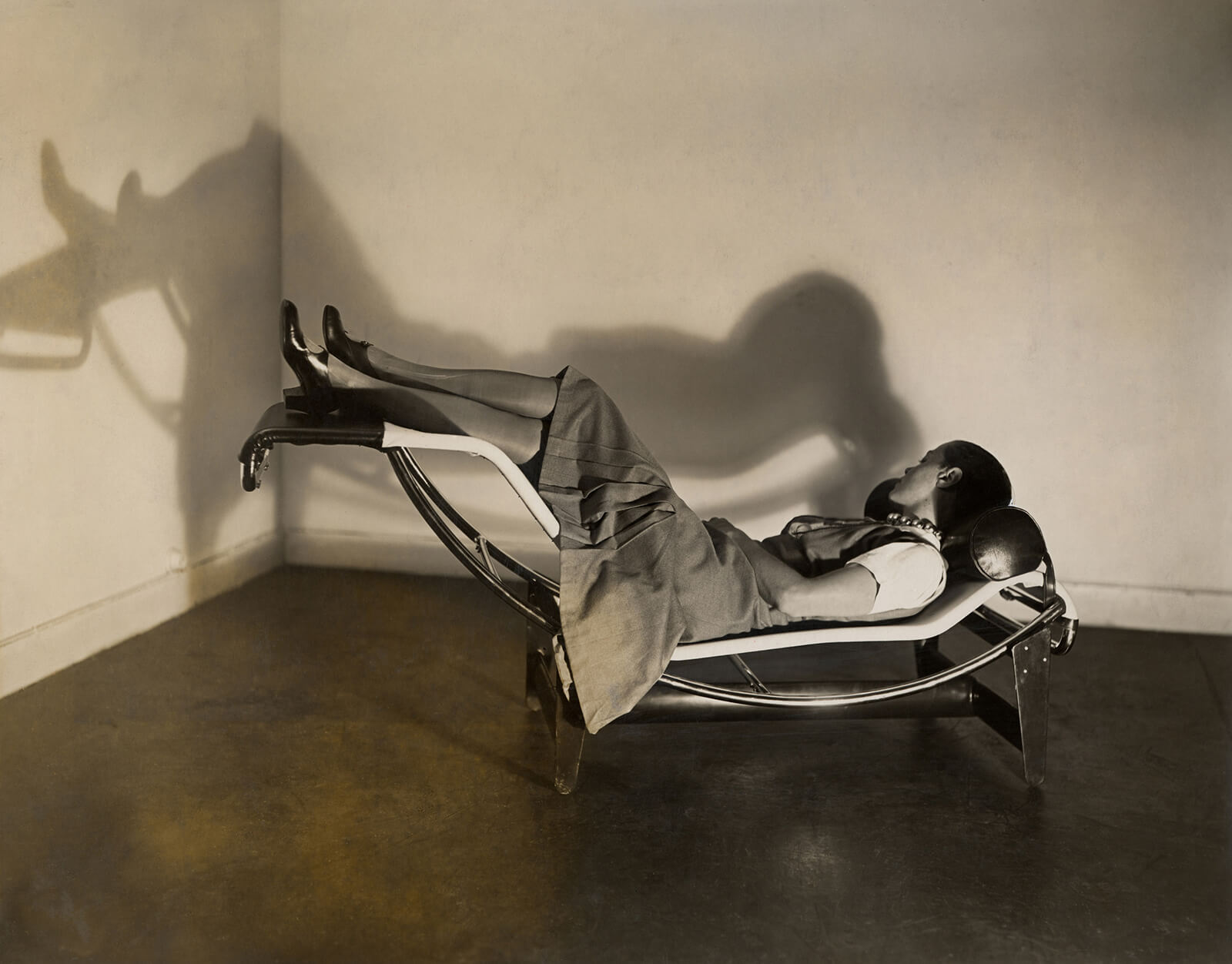
Charlotte Perriand on ‘Chaise longe basculante B306’, 1928 (Le Corbusier, P. Jeanneret, C. Perriand, circa 1928)
COURTESY: © F.L.C. / ADAGP, Paris 2019 © ADAGP, Paris 2019 ©AChP
CHARLOTTE PERRIAND MAY be well-known in the pantheon of French modernist architects and designers but is perhaps most famous for several classic, still coveted pieces of furniture co-created with the Swiss-French architect Le Corbusier and his cousin and business partner, Pierre Jeanneret. These include the ‘LC2 Grand Confort’ armchair and ‘LC4 Chaise Longue Basculante’, both manufactured by Thonet in 1928 (and now by Cassina). Others may be aware of Perriand’s mammoth project, the ski resort, Les Arcs in Savoie, France of 1967 to 1989, where she designed chalets to accommodate 30,000 people. She oversaw a team of architects, and created many of the chalets’ interiors, including compact kitchens and bathrooms. Yet the oeuvre of Paris-born Perriand, who died in 1999 aged 96, far exceeded these examples, as shown by the huge body of work currently on display at the exhibition ‘Charlotte Perriand: Inventing a New World’, at the Fondation Louis Vuitton in Paris.
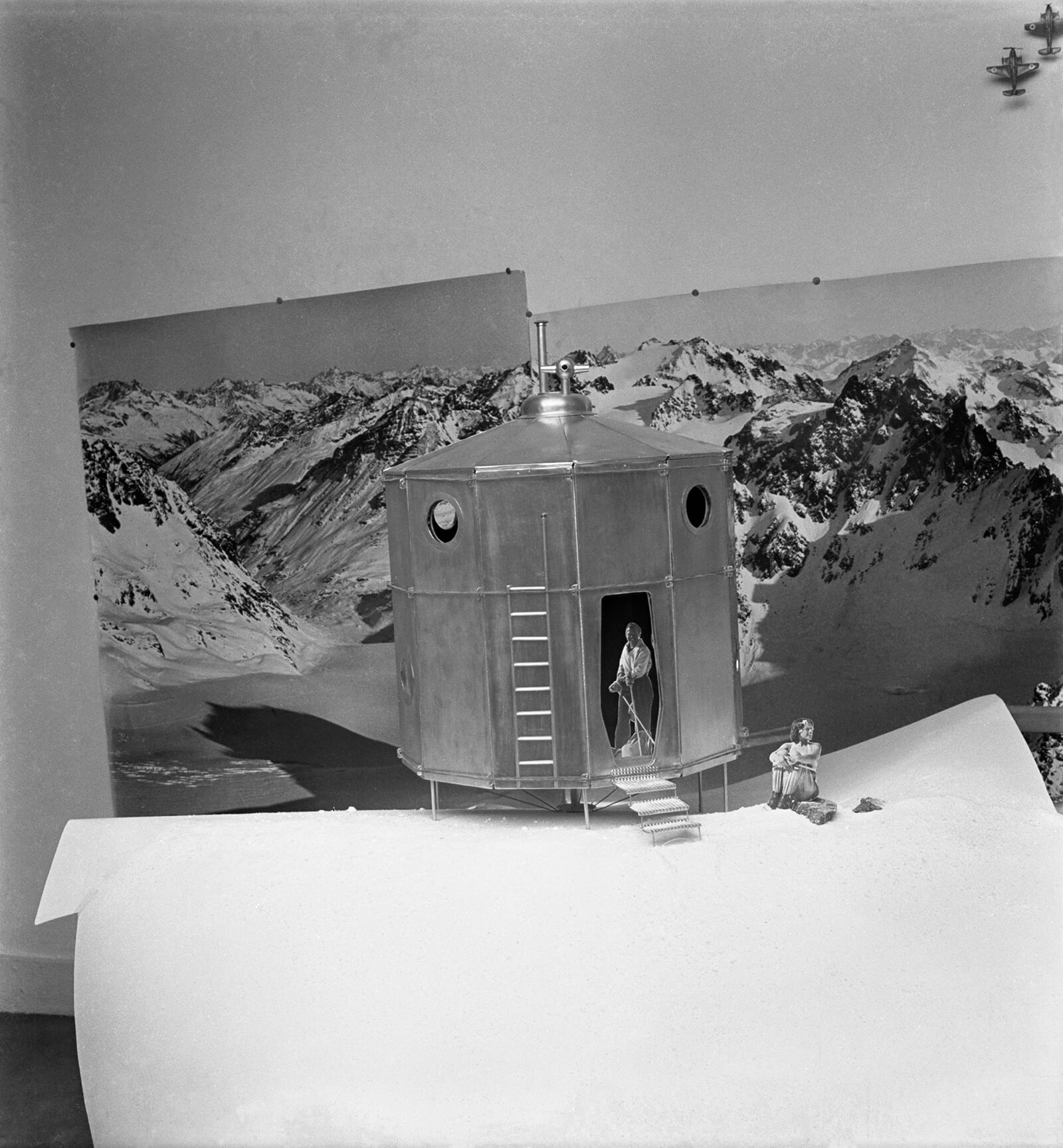
Charlotte Perriand, Pierre Jeanneret, photograph of the model ‘Le refuge Tonneau’, 1938
COURTESY: © ADAGP, Paris 2019 © Charlotte Perriand / AChP
Perriand’s daughter, Pernette, who assisted her mother for many years, and Jean-Paul Claverie, a senior adviser to Bernard Arnault, President of the gallery, hatched the idea for the show five years ago: “We wanted to celebrate Perriand’s career, her relationship with modernity and the new place of women in the artistic world in the 20th century,” says Claverie.
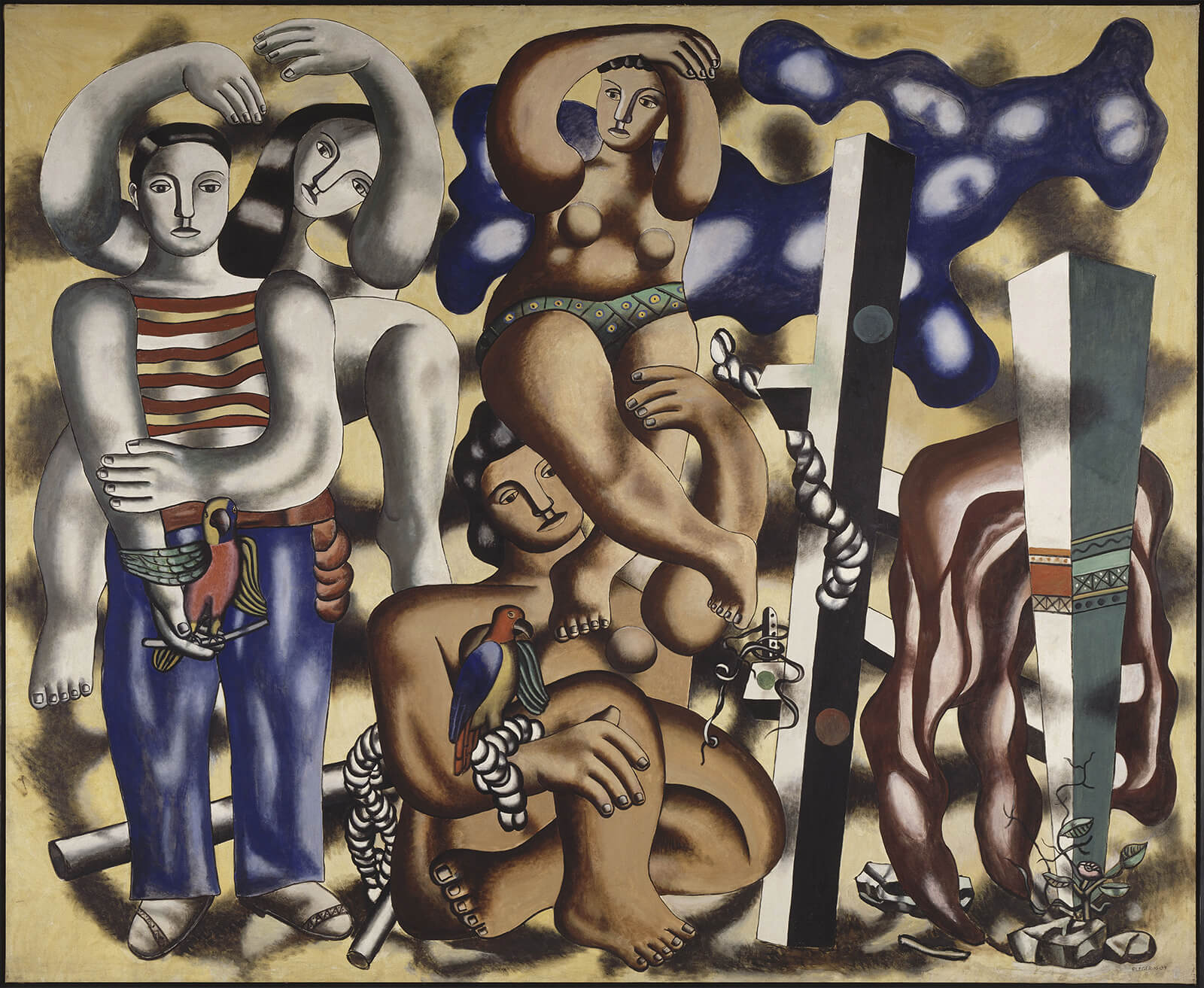
Fernand Léger, ‘Composition aux deux perroquets’, 1935-39
COURTESY: © ADAGP, Paris 2019 © Centre Pompidou, MNAM-CCI, Dist. RMN-Grand Palais / Jacques Faujour
This gargantuan exhibition showcases 200 examples of her work and occupies 11 galleries distributed across four floors in the Frank Gehry-designed gallery situated adjacent to the Jardin d’Acclimatation in the Bois de Boulogne. The gallery has wisely exhibited Perriand’s work chronologically, given her prolific output and that much of her work will be unfamiliar to many. One of her projects, Perriand’s ‘House Beside the Water’, conceived in 1934 for a competition for affordable holiday homes, is aptly exhibited on the expansive water feature outside the gallery: this has an open deck under a tarpaulin between two cabins and features space-saving furniture such as beds that slide under wardrobes. It was never built in her lifetime, although Louis Vuitton constructed it for the Design Miami fair in 2013. A major attraction of this show are several Perriand projects constructed for the first time, which visitors can enter and explore.

Charlotte Perriand, ‘La Maison au bord de l’eau’, 1934
COURTESY: © ADAGP, Paris 2019 / PHOTOGRAPH: Fondation Louis Vuitton / Marc Domage
Perriand was independent, culturally inquisitive and tough. A monumental photograph of her in the Fondation’s entrance speaks volumes about her: sporting an Eton crop, she stands topless in the Alps, back to the camera, arms outstretched — a powerful expression of ambition and joie de vivre. She was single-minded enough to transcend the prejudices women faced in a predominantly male-dominated world. Her mother, a seamstress, gave her a head start, encouraging her to study furniture at the Ecole de l’Union Centrale des Arts Décoratifs in Paris.
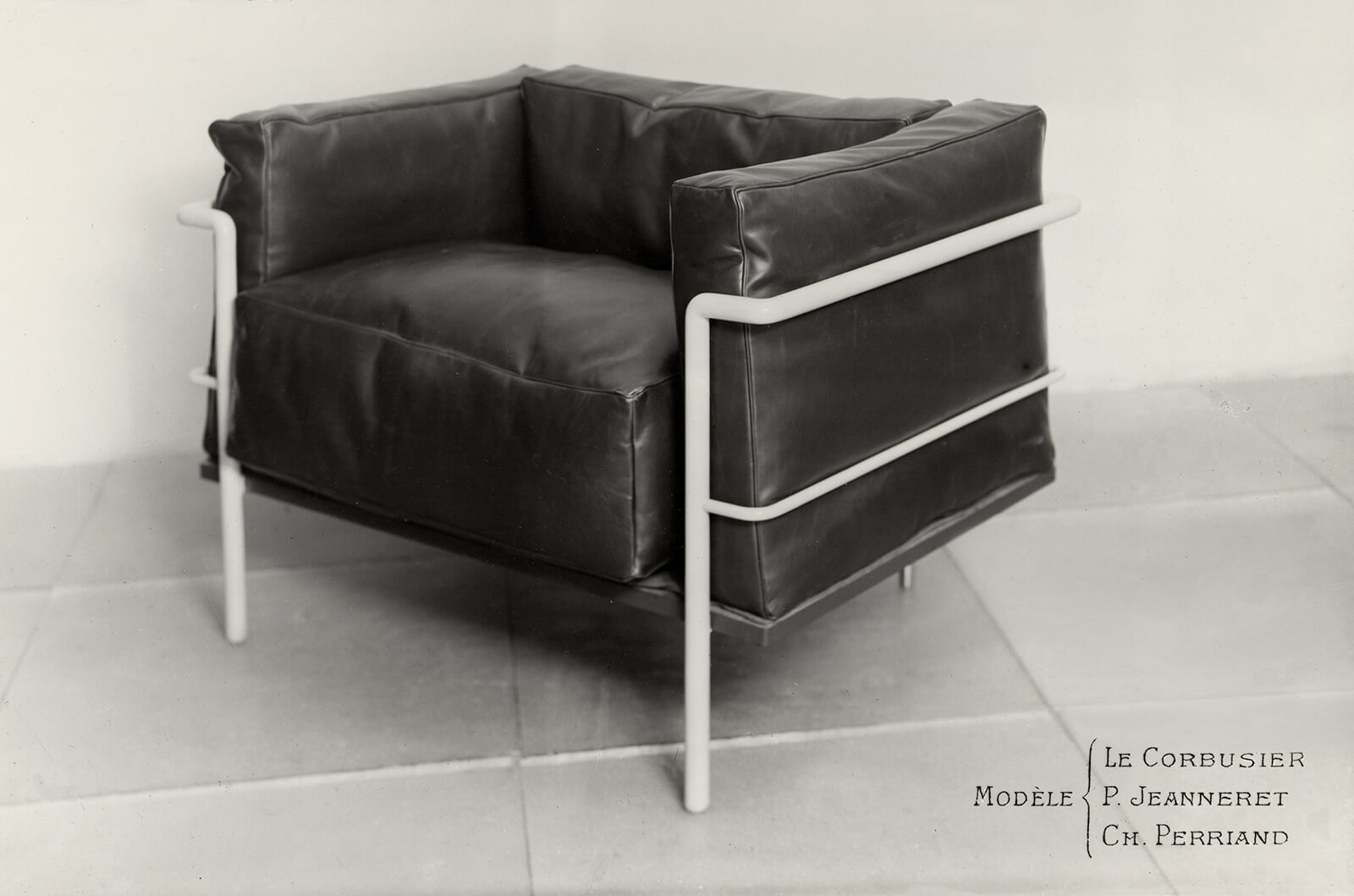
Le Corbusier, Pierre Jeanneret, Charlotte Perriand, ‘Fauteuil grand confort’ 1928
COURTESY: © F.L.C. / ADAGP, Paris, 2019 © ADAGP, Paris 2019 © AChP
She was mainly introduced to modernist design by Le Corbusier’s book, Towards a new Architecture. Aged 24, she applied for work at his Paris studio but was condescendingly told: “We don’t embroider cushions here.” But later, admiring Perriand’s recreation of a section of her apartment-cum-studio, called ‘Bar Under the Roof’, shown at the Salon d’Automne in 1927 — a radically open-plan interior boasting an armchair with a swivelling seat, a cocktail bar and built-in gramophone cabinet — he promptly hired her. She worked for him for ten years, and collaborated with him again in 1952, creating open-plan interiors designed to ensure that women didn’t feel trapped in the kitchen for his apartment block, L’Unité d’Habitation, in Marseille.
Perriand was also a photographer and curator, and took a highly collaborative approach. The exhibition displays 200 pieces by artists whose work she integrated into her projects, notably by Fernand Léger and Le Corbusier, as well as by Picasso, Joan Miró, Alexander Calder, Robert Delaunay, Pierre Soulages and Hans Hartung — the last two known for their abstract, gestural style.
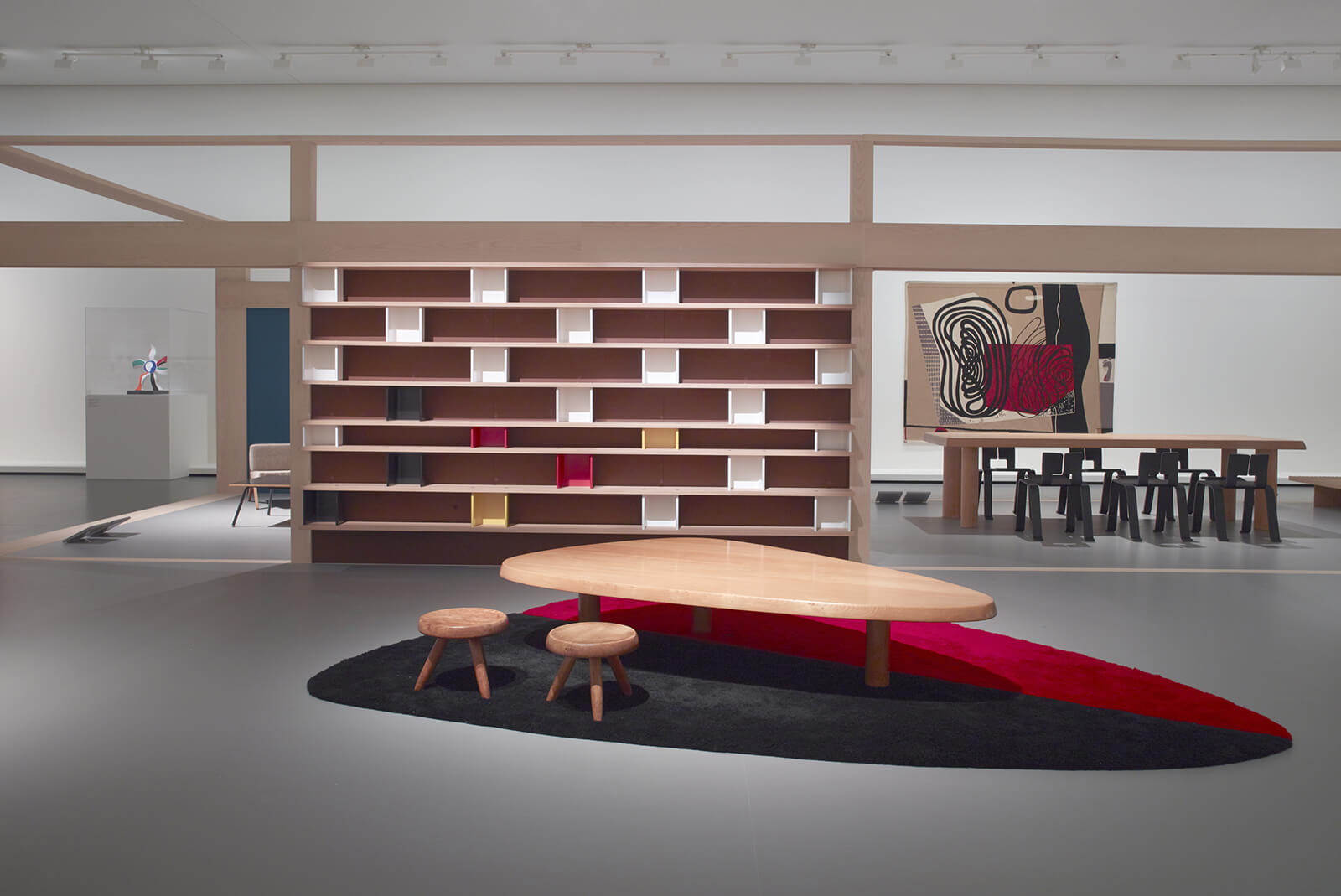
Le Corbusier, Fernand Léger, Charlotte Perriand exhibition ‘Proposal for a Synthesis of the Arts, Paris 1955’. (Reconstructed in 2019)
COURTESY: © ADAGP, Paris, 2019 / PHOTOGRAPH: © Fondation Louis Vuitton / Marc Domage
The exhibition’s first gallery demonstrates Perriand’s love of modern technology, primarily the car and cinema, which inspired her metal furniture; it also features a reconstruction of an apartment co-designed with Le Corbusier and Jeanneret and unveiled at the Salon d’Automne in 1929.
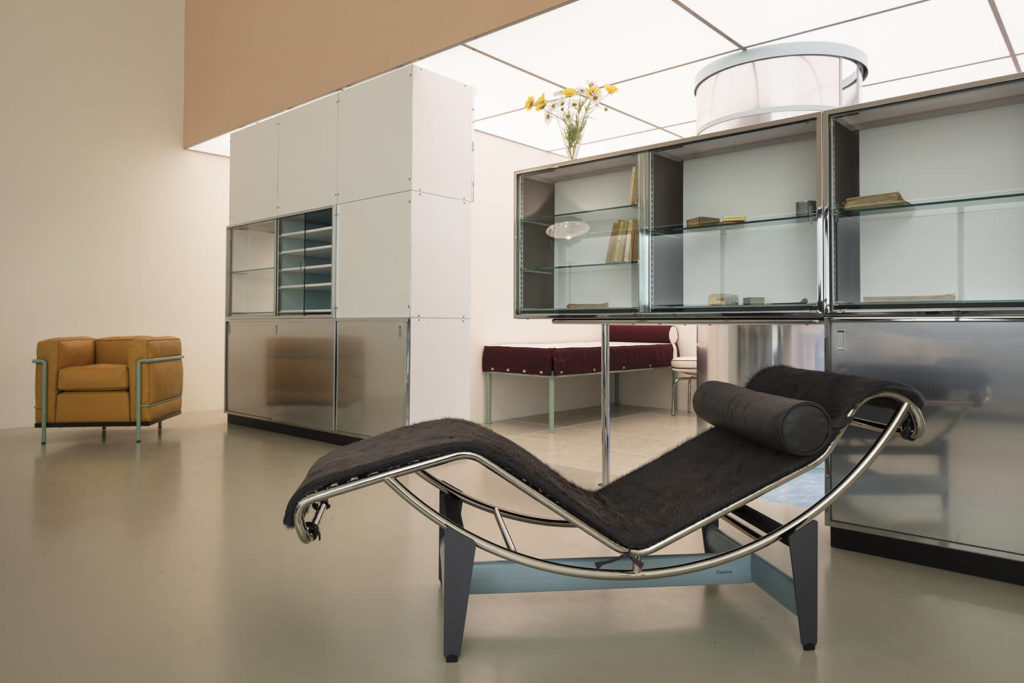
Charlotte Perriand, Le Corbusier, Pierre Jeanneret ‘Un équipement intérieur d’une habitation – Salon d’Automne 1929’. (Reconstructed in 2019)
COURTESY: © F.L.C. / ADAGP, Paris, 2019 © PJ / ADAGP, Paris, 2019 © Charlotte Perriand / ADAGP, Paris, 2019 / PHOTOGRAPH: © Fondation Louis Vuitton / David Bordes
IN THE 1930s, Perriand espoused communism at a time when fascism was on the rise. On show is her panoramic, polemical photo collage, ‘La Grande Misère de Paris’, of 1936, which denounced insalubrious housing in Paris. Simultaneously, she developed a passion for nature, photographing objects such as bones and pebbles, highlighting their abstract beauty, and creating concomitantly organic — or ‘free-form’ — furniture, such as a wooden table with sides of different lengths, allowing people to sit intimately on the shorter sides, or more apart on the longer ones.
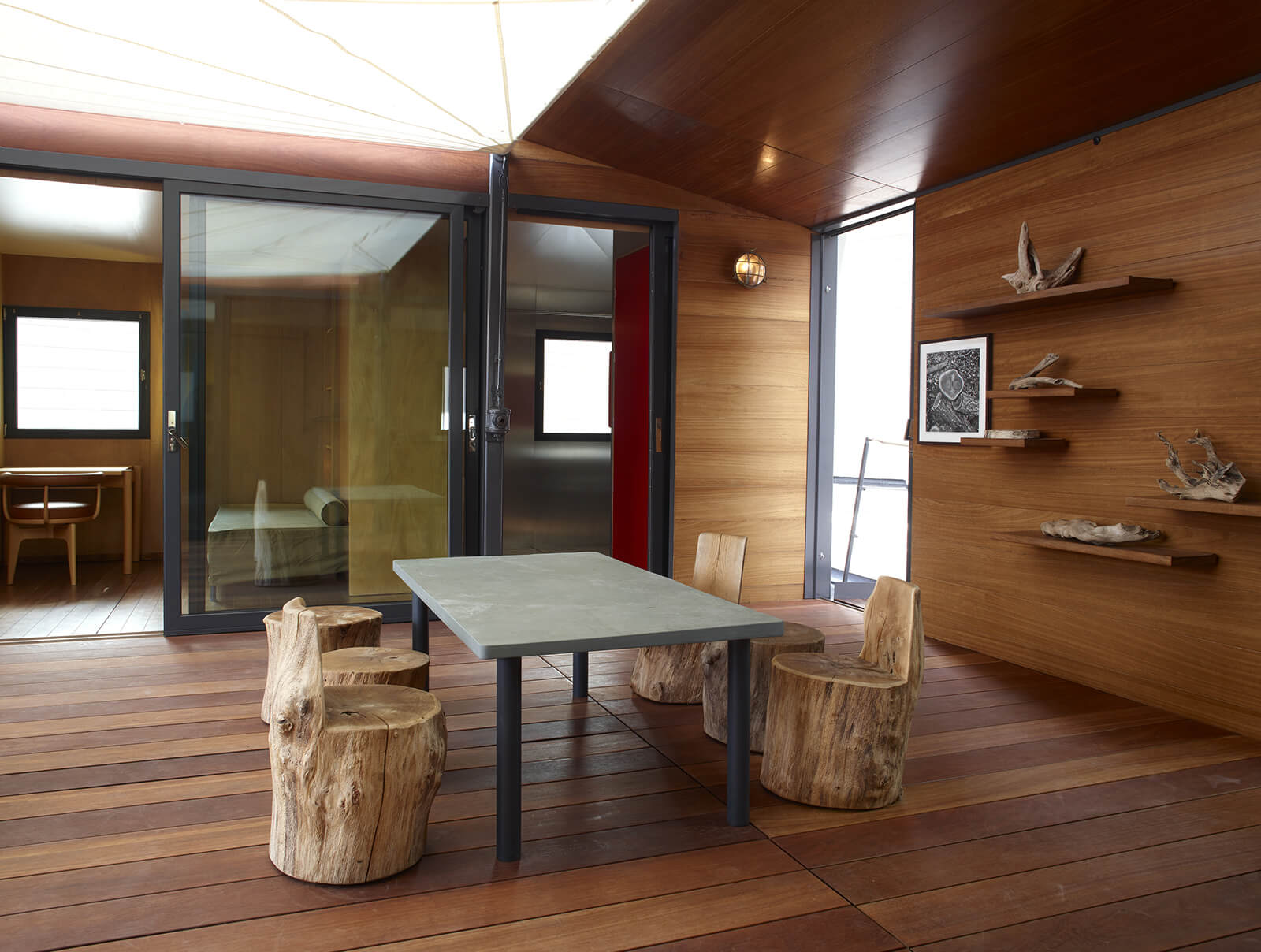
Charlotte Perriand, ‘La Maison au bord de l’eau’, 1934
COURTESY: © ADAGP, Paris 2019 / PHOTOGRAPH: Fondation Louis Vuitton / Marc Domage
In 1940, she was invited to Japan to be an adviser on the country’s industrial arts. There she absorbed Japanese craft traditions, creating furniture from bamboo. In 1955, she returned to the country, staging the exhibition, ‘Synthesis of the Arts’, which paired her furniture with work by Le Corbusier and Léger; it reflected her belief that art and design by different creatives could co-exist in interiors in a non-hierarchical way. Other key exhibits include her ‘Tonneau Refuge’, a prefabricated, moveable aluminium shelter, co-designed with Jeanneret in 1938, her ‘Tea House’ of 1993 for UNESCO and the presciently environmentalist Les Arcs ski resort, whose staggered, snow-capped chalets lean into the slopes, melding inconspicuously into the landscape.
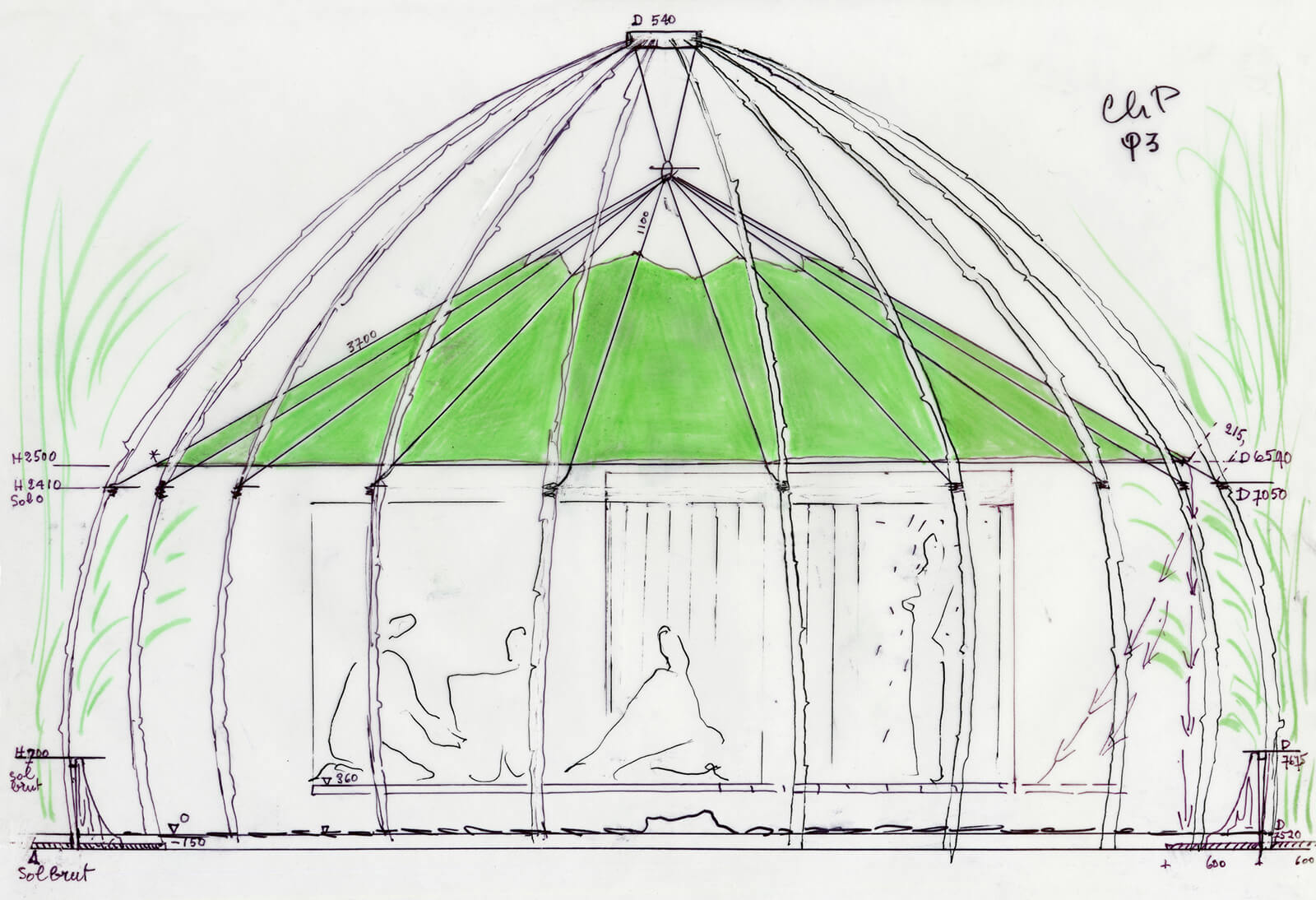
Charlotte Perriand, ‘La Maison de thé’, 1993
COURTESY: © ADAGP, Paris, 2019 / PHOTOGRAPH: © Fondation Louis Vuitton / Marc Domage
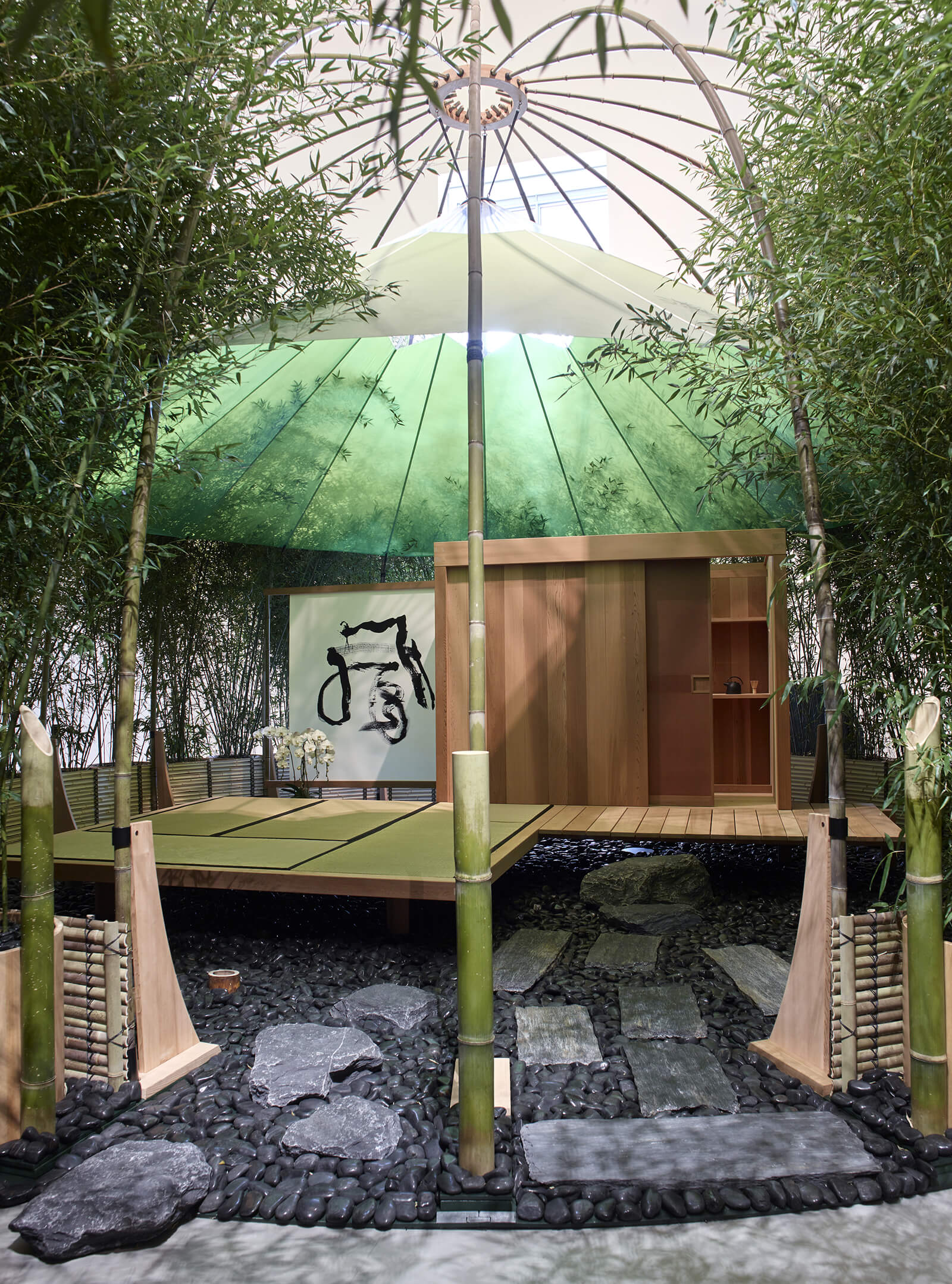
Charlotte Perriand, ‘La Maison de thé’, 1993. (Reconstructed 2019)
COURTESY: © ADAGP, Paris, 2019 / PHOTOGRAPH: © Fondation Louis Vuitton / Marc Domage
It could be said that this exhibition’s title is hyperbolical. After all, Perriand didn’t invent a new world single-handedly but as part of the avant-garde milieu with whom she worked closely. Yet she was an iconoclastic, pioneering designer whose groundbreaking designs — informed by egalitarian politics, a far-sighted concern for the environment and a refusal to allow women to be downtrodden — helped reshape the way we live our lives. This satisfyingly extensive and immersive show is a fitting tribute to a surprisingly multifaceted career.
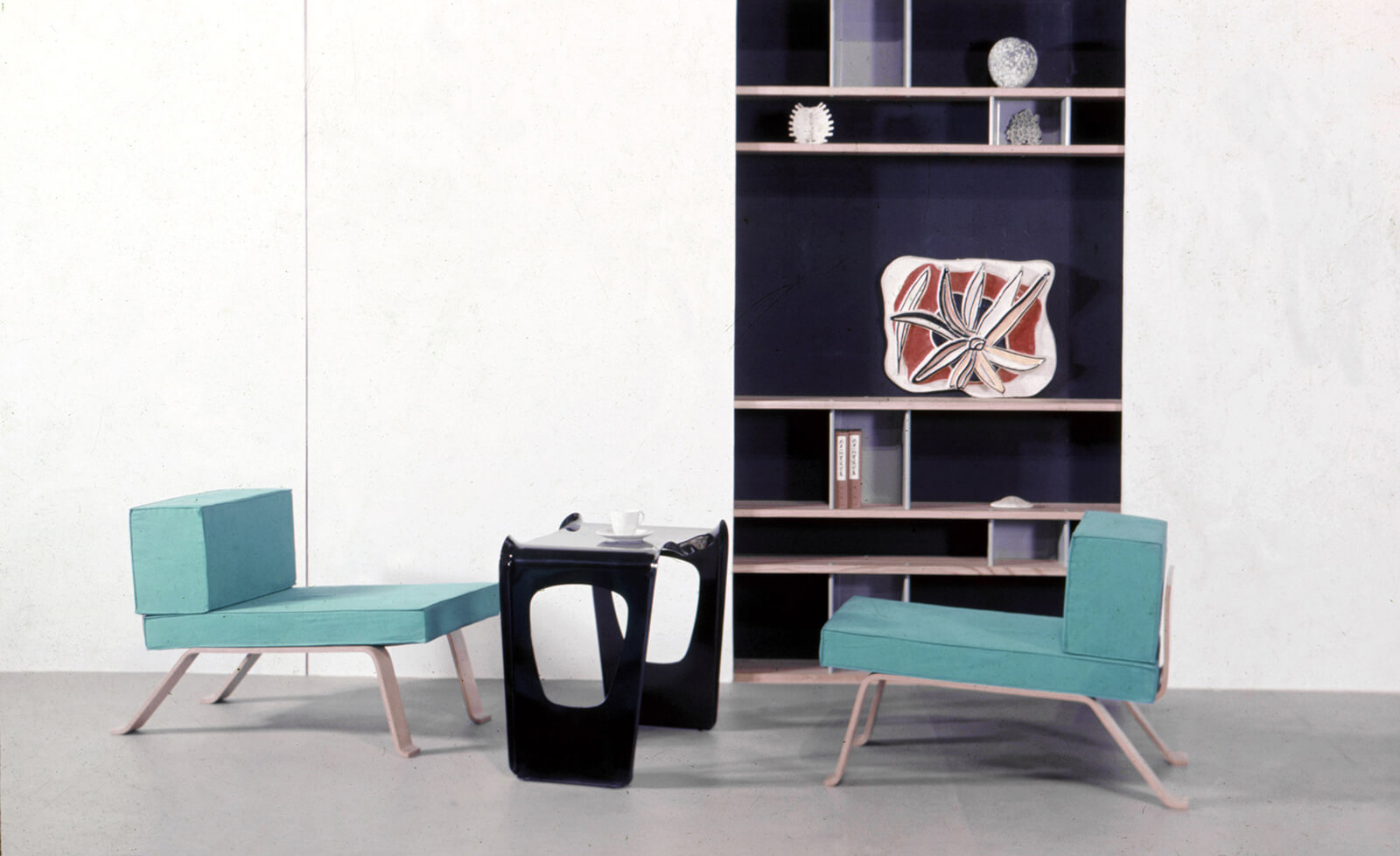
Charlotte Perriand, ‘Salle de réception’, 1955
COURTESY: © ADAGP, Paris, 2019 © AChP
Fondation Louis Vuitton – committed to promoting modern and contemporary artistic creation and to helping it reach a growing audience in France and internationally.





